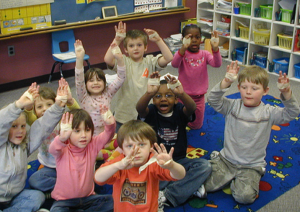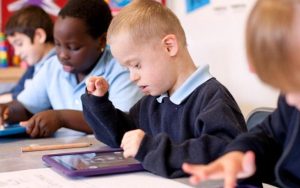- 30 years experience in the field of Special Education
The Use of Technology in The Special Education Classroom
The Modern Version of Stranger Danger
May 23, 2016Successful Summer Vacation Tips for Elementary School Students
July 7, 2016 Special education students are just that: special. Their learning needs are different from the general population of students. And because of this difference, the challenges and triumphs of special education students are particularly rewarding.
Special education students are just that: special. Their learning needs are different from the general population of students. And because of this difference, the challenges and triumphs of special education students are particularly rewarding.
With the wide range of differing needs in most special education classes, top teachers like Shari Duddy quickly become experts at encouraging students to become familiar and comfortable with technology. No matter the equivalent grade or age level, special education teachers encourage their students to use technology just as adeptly as their general matriculation counterparts.
If we look at different levels of education it’s easy to see the impact of technology in the classroom.
In pre-K and kindergarten special education classes, just as their general matriculation counterparts, technology is used as part of the core curriculum. Young learners’ minds are malleable enough to seamlessly flow from one form of technological advancement to another without skipping a beat. With adjustments, special education students can succeed just the same as their counterparts.
Kindergarteners are sponges for information. Young children are so eager to learn, and they can absorb vast amounts of information at incredible rates. Teachers like Shari Duddy begin teaching basic computer skills to kindergarteners. Recognizing the keyboard becomes part of the lesson on the ABCs, and the internet is used to show apples in red, green, and yellow. The basics of education have changed to include the necessities of a computer literate society.
For elementary special education students, technology is used to reinforce learning strategies that the students encountered in pre-k and kindergarten. Taking into account the specific needs of the students in their classrooms, top elementary teachers like Shari Duddy encourage special education students to constantly connect their technology use to the lessons being taught. Not only does this promote a computer literate student, but also promotes a tactile sense of accomplishment for some special education students. Whether special or general education, for a student to feel as if they are a dynamic part of the learning experience leads to a greater understanding of the lessons, and a more engaged and uplifted learning environment.
From videos to books to video conferencing, top special education teachers like Shari Duddy employ technology in innovative ways that allows students to have different ways to grasp subjects. Special education students are also able to have a more fulfilling learning experience by connecting what they see and use every day with their lessons. Teachers using technology in more than one way allows different learners to grasp concepts in such a way that nearly every student can succeed.

High school always presents its challenges. For special education students, not only do they have to deal with their normal special education needs, but now they also have to deal with biological changes in their bodies and the social changes in their environment. Familiar technology during this transitional time could be seen as a soothing remedy to new stimuli. High school is challenging enough.
Smart Phones in the Classroom
Focusing on smart phone usage in special education classrooms, pre-k and kindergarten students can take something most are familiar using to play a bird game and instead use a smart phone to play a game that matches colors and shapes. For elementary special education learners, students can use a smart phone to better understand mathematics problems. High school special education learners can reinforce their reading skills by playing word puzzle games. These basic ideas for smart phone usage can be used in general matriculation classes as well.
The basics of education have changed to include the necessities of a computer literate society. With their special needs, special education students can and should have just as fulfilling a learning experience as their general population counterparts. Top teachers incorporate familiar technologies such as smart phones in to their lessons, recognizing that it’s easier to remember and understand the familiar rather than something different. Whether special or general education, for a student to feel as if they are a dynamic part of the learning experience leads to a greater understanding of the lessons, and a more engaged and uplifted learning environment.
